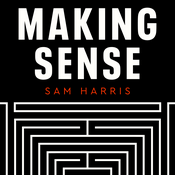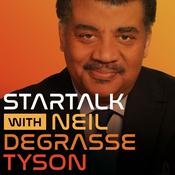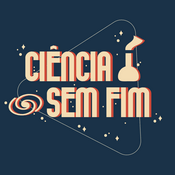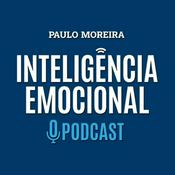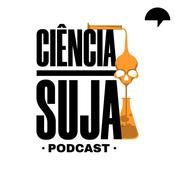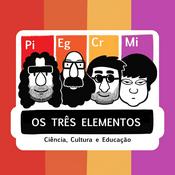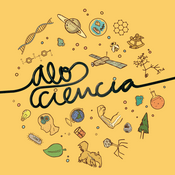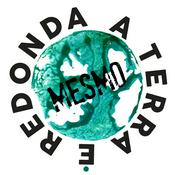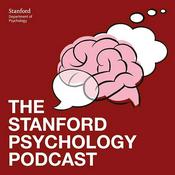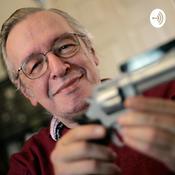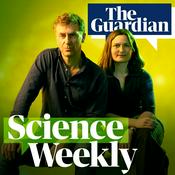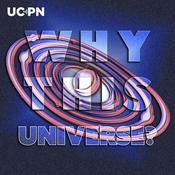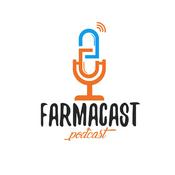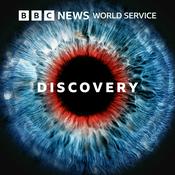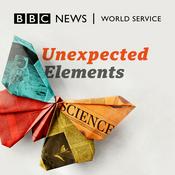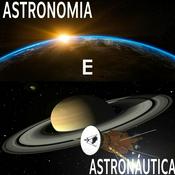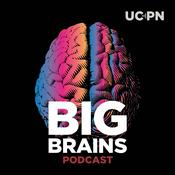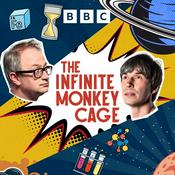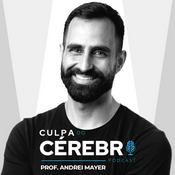44 episódios

Quantum Matter, Super-conductors, and Black Holes | Subir Sachdev on the SYK Model
23/12/2025 | 2h 34min
What makes high-temperature superconductors and “strange metals” some of the most perplexing systems in modern physics?In this episode, we speak with Dr. Subir Sachdev: Harvard physicist and one of the leading architects of today’s understanding of quantum matter. Sachdev explains why strange metals refuse to behave like ordinary conductors, how quantum entanglement reshapes the landscape of many-body physics, and why the quest to understand cuprate superconductors continues to push both theory and experiment to their limits.We explore the physics of the cuprate phase diagram, the collapse of quasiparticles, and the role of quantum criticality in creating universal, linear-in-temperature behavior. Sachdev walks us through the origins of the SYK model, its surprising connections to black-hole thermodynamics and holography, and how new lattice-based models may finally bridge the gap between solvable theory and real materials.Whether you’re curious about superconductivity, quantum criticality, black-hole analogies, emergent gauge fields, or the deep physics behind strongly correlated electrons, this conversation offers a rare, accessible look at how frontier theoretical work is redefining our picture of quantum matter—from the lab bench to the edge of spacetime.Follow us for more technical interviews with the world’s greatest scientists:Twitter: https://x.com/632nmPodcastInstagram: https://www.instagram.com/632nmpodcast?utm_source=ig_web_button_share_sheet&igsh=ZDNlZDc0MzIxNw==LinkedIn: https://www.linkedin.com/company/632nm/about/Substack: https://632nmpodcast.substack.com/Follow our hosts!Mikhail Shalaginov: https://x.com/MYShalaginovMichael Dubrovsky: https://x.com/MikeDubrovskyXinghui Yin: https://x.com/XinghuiYinSubscribe:Apple Podcasts: https://podcasts.apple.com/us/podcast/632nm/id1751170269Spotify: https://open.spotify.com/show/4aVH9vT5qp5UUUvQ6Uf6ORWebsite: https://www.632nm.comTimestamps:01:22 - Subir’s Path to Condensed Matter Physics06:24 - Challenges in Discovering Cuprates09:53 - History of Superconductivity20:07 - Subir's PhD work27:09 - Development of the SYK model41:09 - Strange Metals56:43 - Derivation of SYK Model1:03:53 - Signatures of Strange Metals1:09:58 - How Quantum Mechanics Affects Black Holes1:17:10 - What Brought Subir to Black Holes?1:19:43 - Black Hole Connections to SYK1:29:28 - ADS CFT Correspondence1:37:04 - Can Quantum Computers Help Advance the SYK Model?1:40:17 - Is AI Useful for Theoretical Physics?1:46:40 - How does Quantum Criticality Play into Superconductivity?1:49:11 - Derivation Quantum Criticality1:52:49 - What is Holography?1:55:07 - Holography2:00:19 - Green’s Function2:08:46 - Green’s equation slides2:13:23 - Yukawa Model vs SYK2:17:30 - Can AI Brute Force Physics Discoveries?2:23:51 - What Would Subir Do With Unlimited Funding?2:36:33 - Dissecting the Hype of Superconductivity2:31:15 - Raising the Next Generation of Great Physicists#theoreticalphysics #quantummaterials #astrophysics #superconductivity #superconductor #blackhole #quantumphysics #quantummechanics

How to Build Fault-Tolerant Quantum Computers | Austin Fowler on Surface Codes + TQEC
09/12/2025 | 1h 50min
Would we get a quantum computer sooner if everything was open source?In this episode, we speak with Austin Fowler, one of the architects of quantum error correction and a pioneer of the surface code used in today’s leading quantum computers. Fowler helped lay the groundwork for scalable, fault-tolerant computation at Google Quantum AI, before leaving to advocate for a more open and collaborative model of research.He explains why building a useful quantum computer will require millions of reliable qubits, why no known algorithm yet clearly outperforms classical computation, and why the field’s current competitive funding model may be slowing progress instead of accelerating it. From the engineering challenges of superconducting qubits to the economics of global research, Fowler offers a candid, inside look at the state of quantum technology.We explore the history and promise of quantum error correction, the software bottlenecks that still stand in the way, and how an open-source, international approach — modeled on CERN or the International Space Station — could transform the field. Along the way, Fowler reflects on his time at Google, the importance of collaboration, and what it will really take to make quantum computing practical.Whether you’re interested in quantum hardware, physics, computer science, or research policy, this conversation reveals the technical, ethical, and economic realities behind one of today’s most ambitious scientific pursuits.Follow us for more technical interviews with the world’s greatest scientists:Twitter: https://x.com/632nmPodcastInstagram: https://www.instagram.com/632nmpodcast?utm_source=ig_web_button_share_sheet&igsh=ZDNlZDc0MzIxNw==LinkedIn: https://www.linkedin.com/company/632nm/about/Substack: https://632nmpodcast.substack.com/Follow our hosts!Michael Dubrovsky: https://x.com/MikeDubrovskyMisha Shalaginov: https://x.com/MYShalaginovXinghui Yin: https://x.com/XinghuiYinSubscribe:Apple Podcasts: https://podcasts.apple.com/us/podcast/632nm/id1751170269Spotify: https://open.spotify.com/show/4aVH9vT5qp5UUUvQ6Uf6ORWebsite: [https://www.632nm.com](https://www.632nm.com/)Timestamps:00:00 - Intro01:40 - Austin’s Longevity in Quantum02:31 - What’s the Goal of Quantum Computing?05:01 - Creating Fault-Tolerant Qubits06:55 - Advantages of 2D Surface Code08:47 - Austin’s Journey into Quantum16:32 - Working at Google20:14 - Alternatives to Surface Codes22:18 - Should Quantum Computing Be Open Source?25:20 - Quantum Computing is Eating Itself30:52 - Open Source as a Mission35:46 - Advice for People Getting into TQEC39:03 - Bit Flips vs Phase Flips45:43 - History of Surface Codes49:05 - From Surface Code to Fault Tolerance57:19 - What Software do Quantum Computers Need?1:00:17 - Quantum vs Classical Error Correction1:05:57 - Manufacturing Superconducting Qubits1:12:02 - Noise Models in Software1:21:21 - How do NISQ Experiments help us Build Better Computers?1:24:01 - State of the Art Topological QEC1:31:38 - How did the TQEC Community Begin?1:34:46 - Future of TQEC1:36:03 - Quantum AI1:37:58 - Advice for Young Scientists1:41:35 - Underrated Quantum Research1:47:21 - What are the Most Important Upcoming Developments?

Why Syncing Atomic Clocks is Virtually Impossible | Judah Levine on UTC
26/11/2025 | 2h 4min
Why is syncing atomic clocks still one of the hardest problems in physics and engineering?In this episode, we speak with Judah Levine—legendary NIST physicist and one of the key architects of modern timekeeping—about the invisible systems that hold the digital world together. Levine explains why synchronizing atomic clocks across the planet is far more complex than the clocks themselves, and why seemingly simple ideas like “round-trip delay” break down in real-world media such as fiber optics and the internet.We explore how UTC is built from hundreds of atomic clocks, the difference between keeping time and *transferring* time, and the surprising challenges introduced by asymmetric delays, chromatic dispersion, and environmental noise. Levine walks us through the evolution of cesium clocks, the rise of optical clocks, and the technologies that make GPS, finance, power grids, and global communication possible.Along the way, we discuss the history of time synchronization, from railroad schedules to radio frequencies to modern satellite systems; the ongoing debate over leap seconds; and why the future of precision timing depends not just on better clocks, but on better *engineering* to deliver those clocks’ performance to the real world.Whether you’re curious about atomic clocks, relativity, fiber optics, GPS, the structure of time itself, or the hidden physics behind everyday technology, this conversation offers a rare look at how science, engineering, and careful statistical thinking keep modern civilization in sync—down to the nanosecond.Follow us for more technical interviews with the world’s greatest scientists:Twitter: https://x.com/632nmPodcastInstagram: https://www.instagram.com/632nmpodcast?utm_source=ig_web_button_share_sheet&igsh=ZDNlZDc0MzIxNw==LinkedIn: https://www.linkedin.com/company/632nm/about/Substack: https://632nmpodcast.substack.com/Follow our hosts!Michael Dubrovsky: https://x.com/MikeDubrovskyMisha Shalaginov: https://x.com/MYShalaginovXinghui Yin: https://x.com/XinghuiYinSubscribe:Apple Podcasts: https://podcasts.apple.com/us/podcast/632nm/id1751170269Spotify: https://open.spotify.com/show/4aVH9vT5qp5UUUvQ6Uf6ORWebsite: [https://www.632nm.com](https://www.632nm.com/)Timestamps:00:00 – Intro01:03 – What is UTC?05:50 – Timekeeping for Satellites07:08 – How Radio Created Better Clocks18:32 – From Astronomy to Atoms25:25 – Why are there 24 Hours in a Day?29:55 – Why Synchronizing Clocks is so Hard47:09 – How did Judah get into Clocks?53:29 – Is UTC Vulnerable to Hackers?1:06:41 – Cesium vs Optical Atomic Clocks1:11:23 – How Cesium Clocks Work1:23:35 – Why Cesium Clocks are Imperfect1:26:17 – Judah’s 3 Year Experiment1:29:30 – Statistics with Clocks1:33:40 – Is Time Real?1:36:29 – Is the Universe Slowing Down?1:40:29 – Atomic Time and General Relativity1:42:17 – What’s Left for Atomic Clocks?1:54:34 – What would Judah do with Unlimited Funding?1:58:57 – Judah's Past in Programming2:02:55 – Advice for Young Scientists

Can We Predict History Like the Weather? | Peter Turchin on Cliodynamics
04/11/2025 | 1h 18min
Why do civilizations rise, prosper, and then collapse? Here's what the math tells us.In this episode, we sit down with Peter Turchin, complexity scientist and founder of the field of cliodynamics, which uses data and mathematical models to study the long-term cycles of history. Turchin explains his theory of elite overproduction, how societies generate too many ambitious, educated elites competing for too few positions, and why this dynamic reliably leads to polarization, inequality, and political turmoil.We explore how his structural-demographic theory maps the recurring “boom and bust” rhythms that have shaped civilizations from ancient Rome to modern America, the role of military competition in driving cooperation and social complexity, and how new tools—from AI-assisted historical databases to ancient DNA and LiDAR—are transforming the study of the past.Whether you’re drawn to history, sociology, complexity science, or the fate of modern democracies, this conversation reveals how Turchin’s quantitative approach offers a new way to understand—and maybe even forecast—the forces that make societies rise and fall.Follow us for more technical interviews with the world’s greatest scientists:Twitter: https://x.com/632nmPodcastInstagram: https://www.instagram.com/632nmpodcast?utm_source=ig_web_button_share_sheet&igsh=ZDNlZDc0MzIxNw==LinkedIn: https://www.linkedin.com/company/632nm/about/Substack: https://632nmpodcast.substack.com/Follow our hosts!Michael Dubrovsky: https://x.com/MikeDubrovskyMisha Shalaginov: https://x.com/MYShalaginovXinghui Yin: https://x.com/XinghuiYinSubscribe:Apple Podcasts: https://podcasts.apple.com/us/podcast/632nm/id1751170269Spotify: https://open.spotify.com/show/4aVH9vT5qp5UUUvQ6Uf6ORWebsite: https://www.632nm.comTimestamps:00:00 - Intro01:48 - Overproduction of Elites10:56 - Did Models Predict the Rise of Trump?20:43 - Is Russian History Repeating in the US?26:48 - How Competition Stabilizes Societies32:14 - What Data Goes into Cliodynamic Models?38:13 - How New Technologies Shaped Archaeology43:28 - Can Historians Build Mathematical Intuitions?47:59 - What Questions can be Answered with Cliodynamics?52:23 - Does the NYC Mayoral Race Fit into Turchin's Theory?56:37 - Is Fear of China Bringing Us Together?58:29 - Do Historians Reject Turchin’s Work?1:00:03 - Trends in Civilizations and Outliers1:03:29 - Calvary and the Evolution of Societies1:10:03 - Is Evolution via Natural Selection a Suitable Analog for History?1:15:16 - Could Turchin's Ideas Be Misinterpreted Dangerously?

Why Do Quantum Computers Make So Many Mistakes? | Mikhail Lukin on Quantum Error Correction
21/10/2025 | 1h
You can’t copy a qubit. So how do quantum computers remember anything?In this episode, we sit down with Mikhail Lukin, Harvard physicist and co-director of the Harvard Quantum Initiative, whose lab is building quantum computers from arrays of individually trapped atoms. Lukin explains the paradox of quantum error correction—how you can safeguard quantum information even though it can’t be copied or measured directly—and why this breakthrough may be the key to making large-scale quantum computers possible.We dive into the strange logic of superposition, entanglement, and “small cat states,” explore what makes quantum evolution inherently analog, and learn how Lukin’s team uses optical tweezers and Rydberg interactions to engineer stable, reconfigurable qubits—atoms literally held and moved by light.Whether you’re fascinated by quantum mechanics, computing, Schrödinger’s cat, or the future of information, this conversation reveals how physicists are turning the weirdness of quantum physics into working technology—and why building a fault-tolerant quantum computer is one of the hardest and most exciting challenges in science today.Follow us for more technical interviews with the world’s greatest scientists:Twitter: https://x.com/632nmPodcastInstagram: https://www.instagram.com/632nmpodcast?utm_source=ig_web_button_share_sheet&igsh=ZDNlZDc0MzIxNw==LinkedIn: https://www.linkedin.com/company/632nm/about/Substack: https://632nmpodcast.substack.com/Follow our hosts!Michael Dubrovsky: https://x.com/MikeDubrovskyMisha Shalaginov: https://x.com/MYShalaginovXinghui Yin: https://x.com/XinghuiYinSubscribe:Apple Podcasts: https://podcasts.apple.com/us/podcast/632nm/id1751170269Spotify: https://open.spotify.com/show/4aVH9vT5qp5UUUvQ6Uf6ORWebsite: https://www.632nm.comTimestamps:00:00 - Intro01:32 - Fundamentals of Quantum Computers04:09 - Transistors vs Quantum Gates10:07 - What is Quantum Error Correction?14:23 - State of the Art QEC22:19 - Quantum Research Before Lukin27:35 - Lukin’s Breakout Work31:10 - From Quantum Optics to Quantum Computing36:59 - Working with Neutral Atoms48:17 - Funding Quantum Computers50:00 - Transverse Gate Operations58:22 - Is Quantum Computing All Hype?#quantumcomputing #quantumerrorcorrection #mikhaillukin #qubits #schrodingerscat #entanglement #superposition #quantumphysics
Mais podcasts de Ciência
Podcasts em tendência em Ciência
Sobre 632nm
Ouça 632nm, Making Sense with Sam Harris e muitos outros podcasts de todo o mundo com o aplicativo o radio.net

Obtenha o aplicativo gratuito radio.net
- Guardar rádios e podcasts favoritos
- Transmissão via Wi-Fi ou Bluetooth
- Carplay & Android Audo compatìvel
- E ainda mais funções
Obtenha o aplicativo gratuito radio.net
- Guardar rádios e podcasts favoritos
- Transmissão via Wi-Fi ou Bluetooth
- Carplay & Android Audo compatìvel
- E ainda mais funções


632nm
baixe o aplicativo,
ouça.
